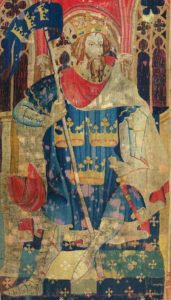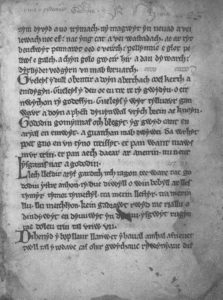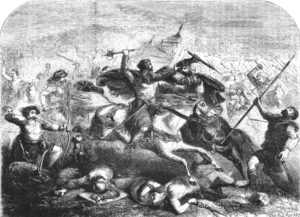From Historic UK
The legend of King Arthur: pseudo-history or fact? His historical legitimacy has been widely disputed by historians over the centuries, debating the validity and legitimacy of the existence of the king and yet still the results are inconclusive. With the limited number of historic documents and resources available to them, and the supposed event happening over a millennium ago, many historians’ conclusions are heavily opinionated. Whether you’re a believer or not, there is no denying that the story of the Dark Ages king is one that we hold close to our hearts as proud Britons.

The first piece of literature to mention Arthur by name is a Welsh poem named Y Gododdin, which dates from between the 7th and 11th century. In a translated version of the poem, it speaks of a warrior named Gwawrddur and says “Gwawrddur was skilled at slaying his enemies. But was no Arthur.” Albeit little evidence, this does imply that there was once an incredibly skilled warrior named Arthur who represented the gold standard of warriors. Some historians argue that Arthur was a legend fabricated from the deeds of several different people; here there is at least one historic warrior upon whom the legend could have been based.
 A facsimile page from Y Gododdin, from the Book of Aneurin (c. 1275)
A facsimile page from Y Gododdin, from the Book of Aneurin (c. 1275)A work by another Welsh monk entitled Historia Brittonum, or History of the Britons, was written in the early 9th century and contains the details of 12 battles in which Arthur supposedly took part during his lifetime. The book depicts Arthur as more of a military commander than a king and says “The magnanimous Arthur, with all the kings and military force in Britain, fought against the Saxons.” The scribe continues: “he was twelve times chosen their commander, and was as often conqueror.” Also, Arthur is labelled “dux bellorum” or military commander, clearly viewing him more as a military leader than a ruler. The main issue with this book is that the locations named, in some cases, do not share their names with places that currently exist, for example the River Gleni, the River Duglas in the region of Linius, and the River Bassas. Also, the mighty Arthur is said not only to have survived these 12 battles but elaborates: “nine hundred and forty fell by his hand alone” at the battle of Mount Badon. The account comes across as a work of fiction rather than fact.

This story is widely considered by historians to be somewhat historical and somewhat fictional, created from an array of sources consisting of Latin and Celtic literature, to the point where it’s hard to distinguish fact from fiction.
So was Arthur a real person? There is little concrete evidence, historians have differing theories, and so it appears we may never know for certain.
By Aidan Stubbs. I’m a sixth-form student with a keen interest in history, particularly the legend of King Arthur.
No comments:
Post a Comment
Comments are subject to deletion if they are not germane. I have no problem with a bit of colourful language, but blasphemy or depraved profanity will not be allowed. Attacks on the Catholic Faith will not be tolerated. Comments will be deleted that are republican (Yanks! Note the lower case 'r'!), attacks on the legitimacy of Pope Leo XIV as the Vicar of Christ, the legitimacy of the House of Windsor or of the claims of the Elder Line of the House of France, or attacks on the legitimacy of any of the currently ruling Houses of Europe.